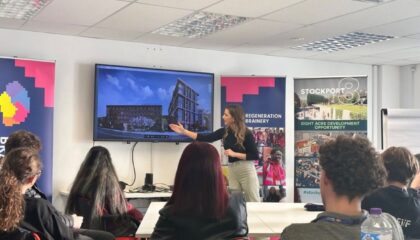When it’s safe for offices to play host to occupiers once more, there are positive signs of appetite to return. One study shows that 65% of the UK workforce are planning a return in June, with two thirds expecting to be back by July.
As employees return to offices, business owners and landlords must prioritize employee health and create healthier workplaces. Encouraging hybrid working, maintaining hygiene, and addressing ventilation concerns are important for a successful transition.
While government ad campaigns promote opening windows at home for fresh air, this may not be suitable in the workplace. In urban areas with high air pollution, opening windows can expose occupants to harmful particulate matter. Examples include vehicle exhaust fumes and untreated air. Occupants are exposed to particulate matter (composed of black carbon, sulphate, nitrates, ammonia, sodium chloride, and mineral dust). This poses health risks of its own. Particles travel into lungs and the bloodstream, causing cardiovascular and respiratory disease.
Harness the power of technology for healthier workplaces
Building owners need data to confidently offer clean environments, encouraging occupiers to return to offices from homes and gardens. To achieve this, landlords are leveraging technology for healthier workplaces. Forward-thinking developments include UV light air purification, touchless fixtures, and advanced filters in ventilation systems.
The UK government has included proposals on how to improve ventilation in its consultation on the future of building regulations. The plans require offices to use ventilation systems that provide 50% higher rates of fresh air, surpassing existing minimum standards. Many offices have already exceeded building regulation requirements for years.
Transforming Buildings with Smart Technology for Healthier Workplaces
Promoting healthier workplaces doesn’t require replacing HVAC systems. Smart building technology platforms like Workman’s IBOS can optimise existing systems. Through remote connectivity, IBOS monitors occupier comfort factors and provides alerts for air quality, lighting, safety, and emergencies.
IBOS offers precise and reliable data, enabling occupiers to monitor temperature and air quality in their building section. It creates cleaner air by informing building managers exactly when to replace air conditioning filters, for example. Instead of a twice yearly fixed replacement schedule, filters can be replaced as needed, ranging from once a year to six times.
With a much higher degree of control, IBOS allows building owners to address the issue of office air quality. This takes advantage of technology to measure carbon dioxide and other pollutants, making adjustments as needed. Dirty filters require more energy to push air, while clean filters result in cost and carbon savings.
Healthy workplaces are key to the mental and physical health of employees. Productivity gains can be achieved by programming IBOS to boost air circulation during the post-lunch CO2 peak, avoiding the slump.
Increased ventilation levels can benefit different building sections based on CO2 levels. Heating and cooling can also be controlled granularly, considering area-specific usage.
Mind the workplace gender data gap
Of course, not all employees are equal. The workplace has a gender data gap. Office temperatures and chemical analysis primarily rely on male data, neglecting female perspectives. The 2019 book, Invisible Women: Exposing Data Bias in a World Design for Men, by Caroline Criado Perez, shows that the formula to determine a standard office temperature was developed in the 1960s around the metabolic resting rate of the average man. But a recent Dutch study found that the metabolic rate of young adult females performing light office work is significantly lower than the standard values for men doing the same activity. In fact, the formula may overestimate female metabolic rate by as much as 35%, meaning that current offices are on average five degrees too cold for women.
These differences also apply to the quality of air itself, because men and women have different immune systems and hormones, which can play a role in how chemicals are absorbed. Women tend to be smaller than men and have thinner skin, both of which can lower the level of toxins they can be safely exposed to.
For workplaces to be truly smart, and operate at safe levels for all, data around the needs of employees needs to be collected from groups reflective of today’s workforce, not just the male contingent.
Healthy buildings mean healthy income
In the meantime, data afforded by IBOS gives landlords better insight into how they can improve the environment and the wellbeing of occupiers. Rules can be set within the system to reduce imbalances across an office as well as optimising energy use, while also keeping everybody as happy and comfortable as possible within their specific area of the office.
There are significant bottom-line gains to be made. Buildings certified as healthy attract rents between 4.4% and 7.7% more per square foot than their nearby non-certified peers, according to ‘The Financial Impact of Healthy Buildings‘, research conducted in December 2020 by the MIT Real Estate Innovation Lab. The increased financial impact of buildings certified by schemes such as Fitwel or Well, is independent of all other factors, including building age, renovation, lease duration. Healthy buildings are seen as an asset associated with occupier wellbeing and productivity.
In the wake of the pandemic, the premium for healthy spaces is likely to increase. By deploying technological solutions like IBOS, building owners can keep occupiers safe from Covid, while providing healthier and therefore more attractive workplaces, on-demand.
By Vicky Cotton, Head of ESG, Workman and James Hallworth, Senior Associate, Building Technology Lead, Workman
Read more about Workman’s IBOS, the key to delivering smart buildings.
Read more about Workman’s IBOS, as reported by EG.



